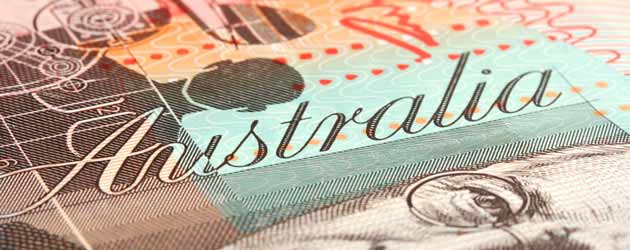
The Pound to Australian Dollar exchange rate tumbled by around -0.7 cents to 1.4762 (GBP/AUD) earlier this morning as the Reserve Bank of Australia said that the ‘Aussie’ Dollar’s overvaluation does not warrant a credible case for intervention.
The Australian Dollar has appreciated by a staggering 120 cents against Sterling over the past decade, from just over 2.7100 in 2003 to a near all-time low of 1.4630 earlier this week. The domestic economy has grown at a steady average pace of around +0.7% per quarter during that time, but many businesses in Australia feel that the Australian Dollar’s exchange rate is overvalued.
Indeed, the newly released RBA document notes that according to most models, including IMF scales, “the exchange rate is overvalued by 4-15%”.
Business owners in Australia are particularly concerned about the ‘Aussie’ Dollar’s strength because it is seen to have a detrimental effect on export profits. This is because when the Dollar gets stronger Australian goods become more expensive on the global market, which can drive importers elsewhere for more competitive prices.
During the past 16-months the Reserve Bank of Australia have cut interest rates by 175 basis points from 4.75% to the current level of 3.00%, in an attempt to foster growth in the country as the mining boon begins to slow down.
At the latest RBA meeting on February 5th Governor Glenn Stevens mentioned that the Central Bank is willing to reduce rates further if necessary, which boosted morale among disgruntled business owners and damaged demand for the Australian Dollar. However, when the Minutes from the meeting were released on February 18th they showed that RBA policymakers are happy to wait on the sidelines as the recent rate cuts work their way through the economy; this boosted the ‘Aussie’, and angered exporters.
Building upon the sentiments of the Minutes Report, the latest RBA papers, released last night, show that as many as 34 Central Banks publicly hold the Australian currency. China, India, Iceland, France, South Africa, South Korea, Chile, and Thailand were notable additions to the list of holders. With the global crisis striking the heart of the financial industry, it seems that investors are less confident in the traditional safe havens of the US, the Eurozone, Japan, and the UK.
However, despite this exponential strengthening of the Australian Dollar, the RBA said that the current situation was not comparable to what happened in Switzerland in 2011 when Swiss National Bank foreign-currency reserves swelled 86% in 12 months, leaving the Swiss Franc extremely overvalued and significantly damaging to the country’s exports:
“While the extreme circumstances facing Switzerland presented a clear and credible case for intervention, the circumstances in Australia cannot be comparable. There is not strong evidence that the Australian Dollar is posing an imminent threat of deflation or is highly contractionary for the domestic economy”.
The comments led to a series of AUD rallies as traders interpreted them to suggest that Australia’s relatively high yields would remain intact in the near term; the Australian Dollar improved by around half a cent against the US Dollar, the Euro, the Japanese Yen, and the Canadian Dollar.
It was also announced that Australian Private Capital Expenditure decreased by -1.2% in Q4, and that Home Sales slowed from 6.2% to 4.2% during January, but the data releases did little to divert traders’ attentions from the illuminating Central Bank papers.

Comments are closed.